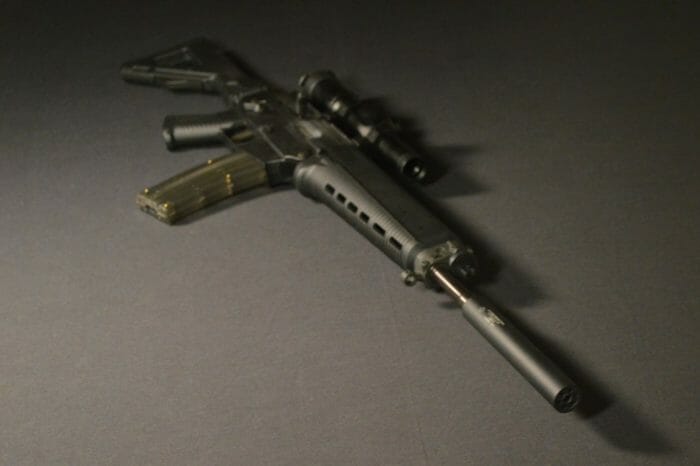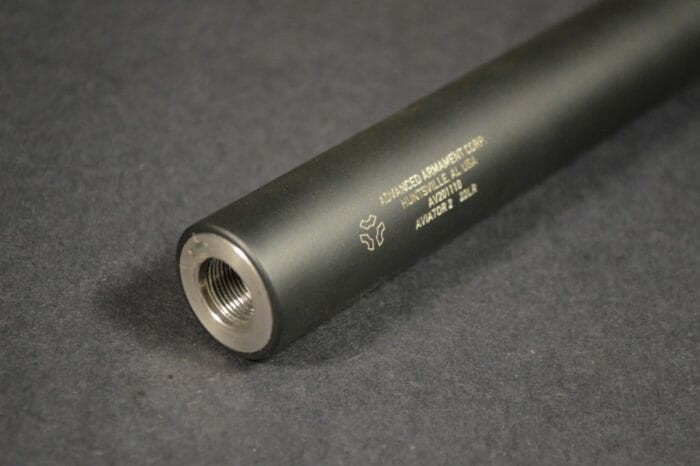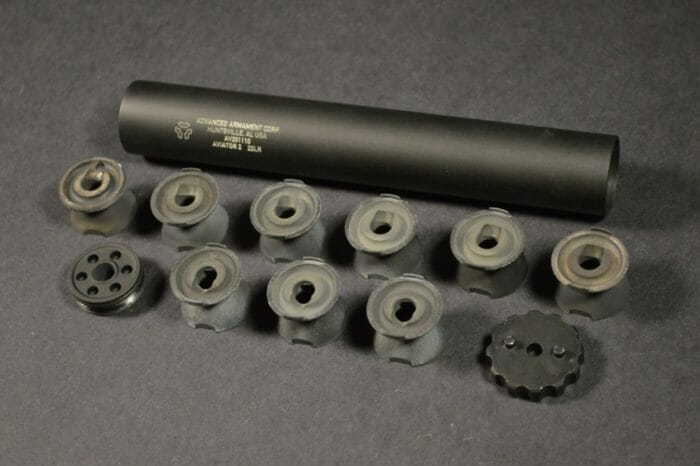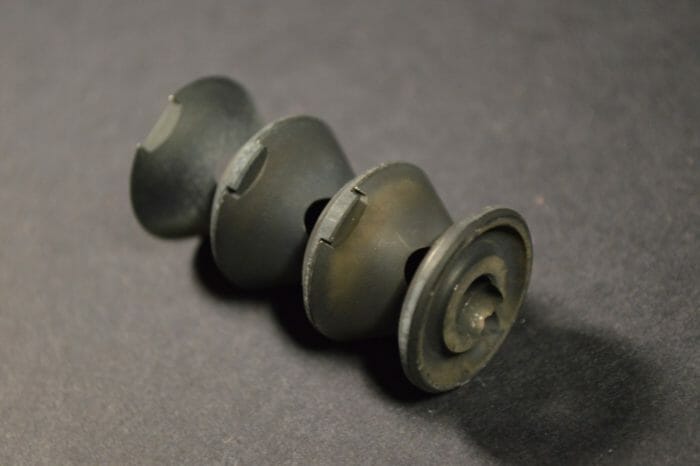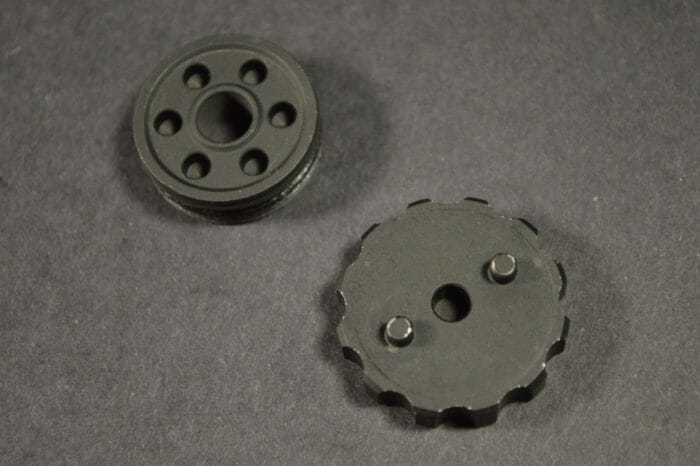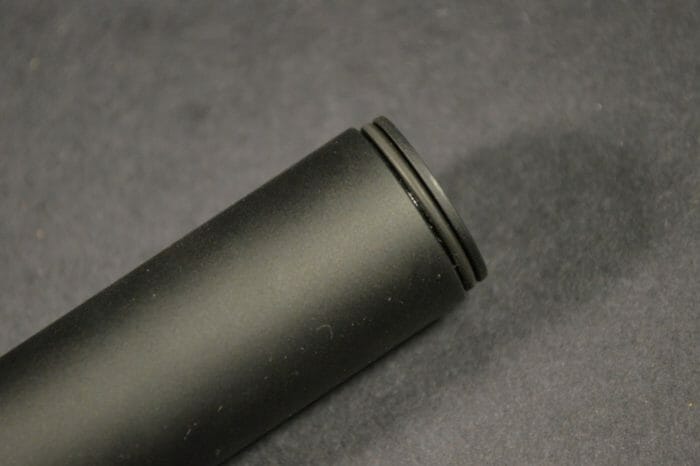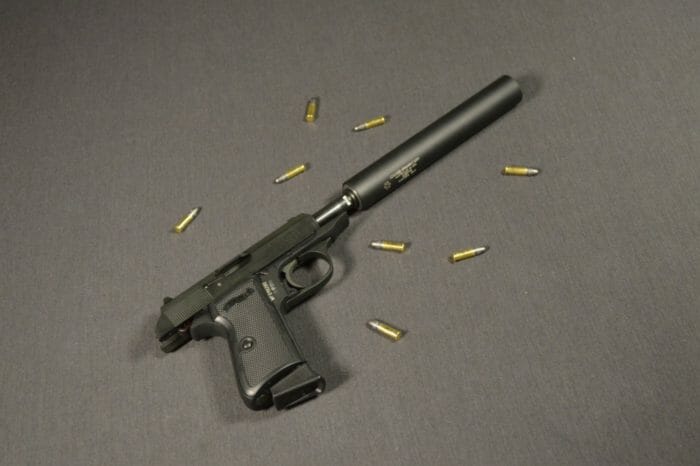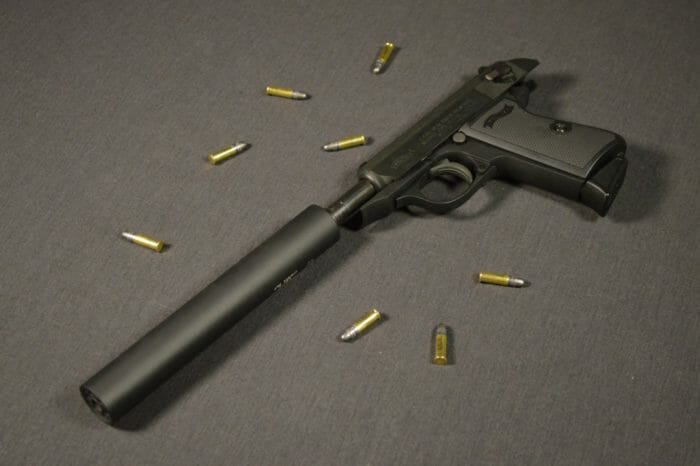Silencer Shop Authority: AAC Aviator 2 Review
Over the past several weeks, I’ve been taking a close look at a variety of .22 caliber suppressors from the folks at Silencer Shop. Though all of these examples have been high-performance silencers, each has represented a different take on rimfire suppression. I’ve seen everything from the classic Omega-style baffles of the Bowers USS to the new and intriguing “pig-nosed” cones that sit inside Surefire’s Ryder 22-S. Today, we will examine yet another take on the .22 caliber can with AAC’s Aviator 2.
One of four .22 suppressors offered by AAC, the Aviator 2 is the most affordable and the newest of the bunch. Despite its relatively low price, the Aviator is still a full-length silencer that is built for high-end suppression while also being incredibly light. In fact, in many ways, it is merely a lighter, cheaper version of AAC’s incredibly popular Element 2. With these facts in mind, let’s take a look at the company’s most recent .22 caliber offering.
Size and Weight
When it comes to overall footprint, the Aviator 2 is a medium-to-large .22 silencer. It’s 6 3/8” long and like other rimfire cans, is 1” in diameter; so it should not interfere with standard pistol sights. Thanks to its light 4 ounce weight, the Aviator actually feels shorter than it is. When I mounted it on my diminutive Walther PPK/S, I honestly barely noticed the can. On my SIG 522, the added weight was trivial and the length was only a minor inconvenience when maneuvering the rifle. With most high performance .22 silencers, 6” or more in overall length is to be expected, but few this size are as light as AAC’s Aviator 2.
Design and Materials
To keep the Aviator so light, AAC makes extensive use of aluminum in the suppressor’s tube and baffle stack. The only steel parts in the Aviator 2 are the 1/2×28 thread adapter and the blast baffle; all other parts are 7075 aluminum, and each has a hard-anodized finish. In my opinion, the steel blast baffle and subsequent aluminum baffles offer a reasonable tradeoff between durability/serviceability and weight.
While on the topic of the Aviator’s baffles, let’s dig into their design features. Inside the can’s tube sit a whopping nine K-baffles. The first of these, the blast baffle, is made of stainless steel while the rest of the stack is aluminum. Of all the baffle designs I’ve tried, K-baffles exhibit the lowest backpressure and are the quietest from the shooter’s perspective when using lower pressure ammunition, like .22 LR or subsonic pistol rounds. Manufacturers have been using this general baffle type in rimfire suppressors for many years, and AAC was wise to go with a proven design. Still, I am impressed that they could pack nine of these guys in the tube while still keeping the overall package right at four ounces.
Included with the Aviator 2 is a tool to assist in removing the front cap for disassembly. Once the cap is off, the baffle stack can be pushed out through the front of the can. Since the outer tube is not shielded from lead and carbon debris, build-up inside the stack can make it very difficult to take the Aviator 2 down for cleaning. While some have had success with products like FireClean, cleaning the silencer regularly (every 1,000 rounds at most) should keep the core from sticking. Keeping the can clean is not necessarily difficult, but I would really like to see manufacturers move to shielded core designs to nullify fouling concerns.
Reassembling the Aviator is relatively easy, but since the tabs on the baffle skirts are only for alignment and do not lock together, the stack can be a little wobbly outside of the tube. I found that the best way to reassemble the suppressor is to stack the baffles upside down (blast baffle on top) and drop the tube over the assembled core. Then after carefully turning the can over, the front cap can be screwed back on.
Range Report
Before I even took the Aviator to the range, I had a pretty good feeling that it would be an excellent performer. Any rimfire can that manages to stuff nine K-baffles inside its tube is going to be quiet (assuming the baffles are made properly). With this in mind, the Aviator definitely met my expectations.
According to Silencer Shop, the Aviator 2 is a 114 dB suppressor on a pistol and a 116 dB can when used with subsonic ammunition and mounted on a rifle. To be honest, I think AAC’s product sounds a little better than these numbers might indicate. If you take a look at the limited at ear SPL numbers available in the Suppressor Performance Database, you’ll see that the Aviator comes out ahead of many silencers that slightly outperform it at the muzzle. In all likelihood, AAC’s K-baffles do a better job of eliminating backpressure than some competitors. Thus, the silencer sounds better than expected at the shooter’s ear. The Aviator also produces a neutral-to-deep pitch, which helps to make it all that much more enjoyable, even without additional hearing protection. As you watch the SIG 522 testing below, please note that the standard velocity ammunition I was using that day frequently went supersonic with the SIG’s 16-inch barrel. This made the can sound louder than it actually was.
Interestingly, the Aviator’s lack of backpressure did come with one significant downside. When I used the silencer with my Walther PPK/S .22 and Aguila Standard Velocity ammunition, I found that the setup short stroked fairly frequently. My PPK/S generally hates the Aguila product, but with a suppressor I typically find that the added backpressure makes the pistol more reliable. With the Aviator, this simply was not the case. Keep In mind that this is not a suppressor issue, but it does show just how little blowback the AAC silencer generates.
Conclusion
As far as lightweight, full performance rimfire silencers are concerned, AAC’s Aviator 2 stands near the top of the food chain. Sure, the unshielded baffles can be frustrating impediments to smooth disassembly and the mostly-aluminum build does limit cleaning options, but these complaints are fairly minor. The Aviator’s 6 3/8” length is certainly well within the full size category, but the whole package only weighs 4 ounces. Moreover, AAC’s slight performance disadvantage at the muzzle is countered by the Aviator’s excellent at ear sound reduction.
While prices will vary somewhat between different Powered By Silencer Shop dealers, readers should be able to find the Aviator 2 for under $260. Considering everything the suppressor has to offer, that is an excellent price and the Aviator is definitely worth some consideration as a lightweight, high-performance rimfire can.
An information security professional by day and gun blogger by night, Nathan started his firearms journey at 16 years old as a collector of C&R rifles. These days, you’re likely to find him shooting something a bit more modern – and usually equipped with a suppressor – but his passion for firearms with military heritage has never waned. Over the last five years, Nathan has written about a variety of firearms topics, including Second Amendment politics and gun and gear reviews. When he isn’t shooting or writing, Nathan nerds out over computers, 3D printing, and Star Wars.


